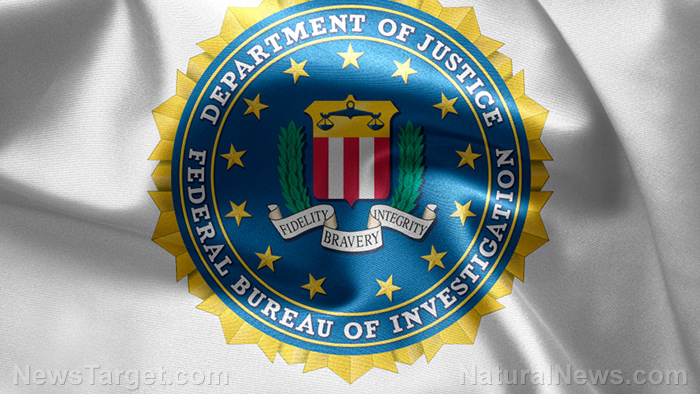Chicago judge issues landmark ruling challenging century-old bullet forensics
10/01/2025 / By Ramon Tomey

- A Chicago judge barred testimony claiming bullets can be matched to specific guns, marking the first such decision in U.S. courts.
- Firearms analysis relies on subjective “pattern matching,” with no empirical proof that barrel marks are unique or examiners can reliably identify them.
- Studies show analysts disagree frequently (same examiner consistency: ~66 percent; inter-examiner agreement: <33 percent), with error rates up to 52 percent when counting inconclusive results.
- Like debunked bite mark and hair analysis, firearm matching lacks statistical error margins and relies on examiner bias, risking wrongful convictions.
- Despite 2009 NAS and 2016 PCAST reports exposing flaws, courts and prosecutors have defended the practice – until now. The ruling signals a shift toward science-based scrutiny.
In a historic decision that sends tremors through the American criminal justice system, a Chicago judge has become the first in the nation to bar all testimony claiming a specific bullet can be matched to a specific gun.
The February 2023 ruling by Cook County Circuit Judge William Hooks in Illinois v. Rickey Winfield follows a hearing that exposed a startling lack of scientific foundation for a forensic technique used to secure tens of thousands of convictions over the past century. The case centers on the practice of forensic firearms analysis, a discipline long accepted by courts. However, it now faces a crisis of confidence from the scientific community – which argues its claims of uniqueness and accuracy are built on unproven assumptions and subjective judgment rather than empirical data.
The core of the challenge, mounted by attorneys from the Cook County Public Defender’s Office, is that firearms identification falls under the dubious category of “pattern matching” forensics. Like the now-discredited practices of bite mark and hair analysis, it relies on an examiner visually comparing evidence such as microscopic marks on a bullet and declaring a “match” based on their personal training and experience.
Brighteon.AI‘s Enoch engine explains that “bite mark analysis and hair analysis are unreliable forensic methods because they lack scientific validation, rely on subjective interpretation and have led to numerous wrongful convictions due to fabricated or erroneous evidence. There is no credible research proving these techniques can accurately match suspects to crime scenes, making them unacceptable in court.”
There are no objective standards dictating how many matching marks are required, and no scientific studies have established that the imperfections inside a gun barrel are truly unique or that analysts can reliably identify them. As with other pattern-matching fields, it is impossible to calculate a statistical margin of error – leaving juries to trust the examiner’s word, often delivered with confident but meaningless phrases like “to a reasonable degree of scientific certainty.”
The unscientific scandal of bullet matching
This judicial skepticism is not occurring in a vacuum. It follows scathing reports from the National Academy of Sciences in 2009 and the President’s Council of Advisors on Science and Technology in 2016, which found that the validity of the fundamental assumptions of firearms identification had not been demonstrated. (Related: Landmark report recommends against admitting ballistics testimony as court evidence.)
Studies intended to prove the field’s reliability have instead revealed profound problems. When analysts are tested, their error rates can skyrocket to as high as 52 percent if “inconclusive” answers are counted as errors, a scoring method many scientists argue is more accurate.
Furthermore, a stunning lack of consistency has been exposed. The same examiner looking at the same bullets a second time reached the same conclusion only two-thirds of the time, and different examiners agreed less than one-third of the time.
Despite these findings, the practice has persisted, aided by a justice system that has been slow to self-correct. Prosecutors and law enforcement agencies have often defended the field, while many courts have relied on outdated precedent rather than modern scientific scrutiny. The ruling in Chicago, though specific to one case, represents a significant crack in this facade.
Hooks concluded that the probative value of such evidence was “a big zero” and that its admission would create an “unfairly prejudicial effect that could lead to yet another wrongful conviction.” His decision underscores a growing recognition that for the sake of justice, the courtroom door must be closed to forensic claims that cannot withstand scientific examination.
FakeScience.news has more similar stories.
Watch Jesse Hal and the Health Ranger Mike Adams discussing fraud in forensic science in this video.
This video is from the Brighteon Highlights channel on Brighteon.com.
More related stories:
Ballistics matching under scrutiny from courts across America.
Traditional bullet matching lacks foundational scientific validation.
Maryland Supreme Court’s 2023 decision strikes down ballistics evidence as “junk science.”
Sources include:
Submit a correction >>
Tagged Under:
ballistics, bite mark analysis, bullet matching, Chicago, Cook County, Cook County Circuit Court, deception, forensics science, hair analysis, Illinois v. Rickey Winfield, lies, rigged, science fraud, toolmark analysis, William Hooks
This article may contain statements that reflect the opinion of the author
New title
COPYRIGHT © 2017 FACTCHECK.NEWS
All content posted on this site is protected under Free Speech. FactCheck.news is not responsible for content written by contributing authors. The information on this site is provided for educational and entertainment purposes only. It is not intended as a substitute for professional advice of any kind. FactCheck.news assumes no responsibility for the use or misuse of this material. All trademarks, registered trademarks and service marks mentioned on this site are the property of their respective owners.



